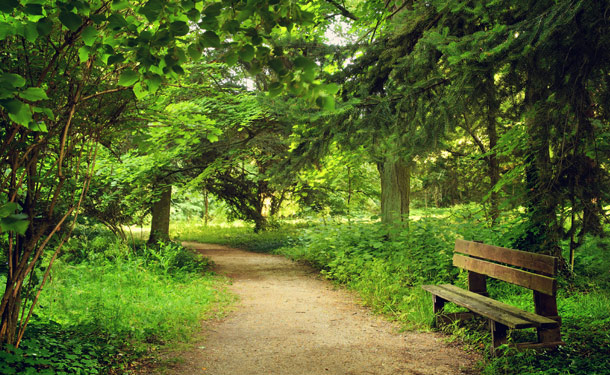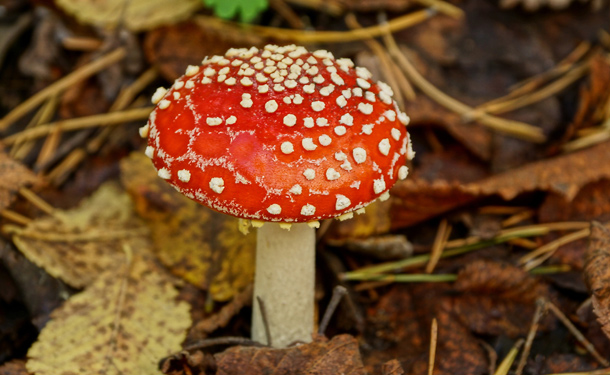Until working closely with trees, one might assume that a tree’s root system only draws moisture and nutrients for that tree. Another popular assumption is that root systems compete for space, water, and nutrients. While some of that is partly true, trees are – in fact – communicating with each other, helping each other and collaborating with other species.

Before reading on, consider this: The next time you are sitting on a park bench, look around at the trees, shrubs, and plants. Know that they are not independent entities fighting for survival, space, and nutrients. Underground, they are connected and exchanging nutrients and information. They are helping each other to survive and more incredibly, they are talking to each other.
This may sound like something out of the blockbuster movie “Avatar” but, there is empirical data that fully substantiates the transfer of carbon, nitrogen, phosphorus, water, allele chemicals, hormones, and defense signals from one tree to another using a mycorrhizal network.
The Mycorrhizal Network is Made of Roots and Mycelia
Mycelia are defined as the interconnecting fibers from fungi root systems. Mycelium grows and expands, connecting itself and colonizing the root systems of trees, plants and shrubs creating a mycorrhizal network. The growth of mycelium in these networks reaches such a density that it is possible to have hundreds of kilometers of fiber under a single footstep.
This network connects all of the individual trees by their root systems in an ecosystem, trees not only of the same species but between species. Evidence of the presence of mycelia is its reproductive organs – mushrooms rocketing up through the ground.
NOTE: The benefits of this association are plentiful. One noteworthy benefit is that through this association, the roots will feed the mycelia in the form of carbohydrates. In return, the mycelia assist the roots in absorbing phosphorus, nitrates, and more importantly water.
Mycelia Promote Plant, Shrub, and Tree Growth and Health
This living network transmits signals from one tree to another and is able to assist those trees in the transferring of water, chemicals, and nutrients between them.
First Contact – When mycelia contact and colonize a root system, the tree, plant, or shrub first reacts by activating its chemical defense systems. This act alone serves to “prime” (to quicken and make more efficient) its immune system responses. Plants, shrubs, and trees become more resistant to disease by simply connecting to “the network”.
Trees Communicate & Exchange with Each Other – In a biodiverse ecosystem with evergreen and deciduous species, the trees will have very different needs throughout the seasons. Using the mycorrhizal network, trees communicate with each other and help each other obtain sufficient nutrients when they are unable to do it on their own.
A Network Alarm System – Mycorrhizae networks colonize and interconnect not only tree root systems, but those of plants and shrubs. Having such diversity gives this entangled network the ability to signal to all connected organisms when biological intruders (bacteria, aphids, etc.) are attacking. Nearby plants and trees are then able to employ their defense systems and ward off or minimize the effects of the intruder. Read this for more on pest prevention and treatment tips.
The Role of Ancient Trees – Ancient trees, known as mother trees, are repositories of information exchanged and accumulated over hundreds of years using the mycorrhizal network it is attached to. These trees are the ones that provide “an assist” to saplings by sending nutrients and defensive signals while it is at a disadvantage. In a forest, saplings race to grow in order to reach sunlight. With the help of mother trees and the mycorrhizal network, its chances of success are greatly increased.
NOTE: When trees are fatally wounded or are dying, they will “dump” their carbon into the mycorrhizal network. By doing this, the trees are sending their “information” to the community interconnected by the network. Along with this information are defense signals, inherently strengthening the connected community.
In November of 2014, Nic Fleming wrote “Plants Talk to Each Other Using an Internet of Fungus” for BBC-Earth. In this article he discusses how mycelia interact with roots and form mycorrhizal associations.
Don’t Confuse These Mushrooms With Signs of a Troubled Tree
Mushrooms on the ground are a signal of mycelia in its reproductive state. Keep in mind that mycelia are contributing to the health of your ecosystem. Plants, shrubs and trees are all communicating and collaborating using this “natural internet”.

However, when mushrooms emerge and flourish on the trunk of a tree or on the base of a tree, it is time to call out a professional to examine that tree. This is one of the many signs of a troubled tree and it is a signal to take immediate action. Visit here to learn how to identify dangerous tree fungus and its warning signs.
Protecting Biodiversity, Mycelia and the Mycorrhizal Network
When planning a landscape, outdoor living space, urban forest, or yard, it is vital to the longevity of the plants, trees and shrubs that different species of each are introduced into the ecosystem. Just as important is the proper fertilization, watering, and mulching of the soil. Proper preparation of the soil allows the roots to thrive and permits the growth of mycelia, eventually creating a mycorrhizal network.
Suzanne Simard, professor of forest ecology, currently teaching at the University of British Columbia has been conducting research on this very subject for over three decades. Her findings are fundamentally changing how we look at trees and the role they play in each other’s existence. In her TED Talk from June of 2016, she presents her research and findings.
Later in September of 2016, Professor Simard sat down with Yale Environment 360 for a Q&A session titled How and Why Trees ‘Talk’ to Each Other.
Simard’s research has opened the door to a new way of thinking. We can no longer substantiate the thought that our trees, shrubs, and plants are independent beings fighting for space and nutrients. The empirical evidence that has been uncovered must be used to usher in a new way of practicing forestry, logging, and even landscaping.
Trees are connected to each other, which are in turn connected to the shrubs that are connected to the plants. Even over long distances, the communication is happening in an effort to keep the biodiverse ecosystem growing and thriving. All thanks to a fungal network.
Learn more about the fungi and biodiversity found in soil by visiting the USDA Natural Resources Conservation Service’s Soil Fungi page.